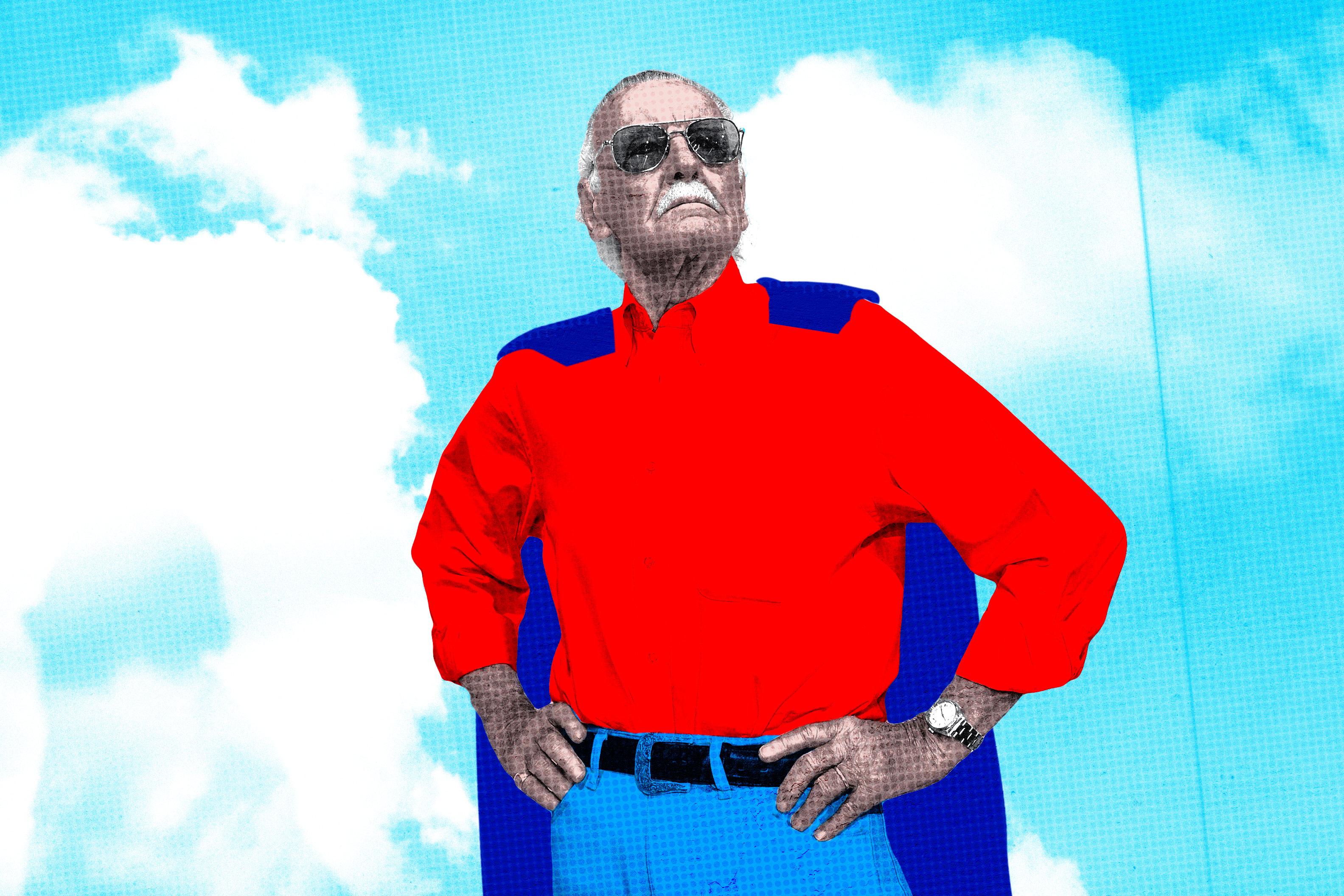A Modern Marvel: How Stan Lee Lived the Comic Book Life and Came to Define Pop Culture
The late Marvel Comics mastermind created the blockbuster template by perseverance and unwillingness to accept that comic books wouldn’t win out in the end. It was a good bet.
In his dotage, there was a lot of uncertainty surrounding Stan Lee: Is he solvent, is he safe, is he healthy, is he [sigh] on board with the direction of comics? For all those questions, one thing was certain: his appearance in cameos in Marvel movies. From his first blink-of-an-eye turn in The Trial of the Incredible Hulk to his surprisingly spry moment in Venom, those brief glimpses of Lee’s, well, cartoonish visage were staples of every movie produced under the Marvel banner.
Stan Lee didn’t invent the Easter egg, but he might as well have. He’s credited with nearly everything else that matters in modern geek culture. Of course, the issue of credit is a prickly one—there’s the credit Lee sometimes got at the expense of his cocreators. And there’s also a symbolic proof that the industry paid its legends homage even in the face of contradictory truth. Those questions always danced precariously around the edges of Lee’s legacy, but his contributions to comics and to pop culture in general can’t be overstated. He invented or helped invent or defined the cast of our global pop cultural language.
His own origin story is that of a comic book protagonist, not because his life is so spectacular but because he programmed his own DNA into that of his creations. The insecurity of Spider-Man, the politics of X-Men, the discomfort with authorship writ large in the Hulk. Lee threw adjectives onto his comic book titles—Amazing, Astonishing, Uncanny—to draw in the reader and also to underscore the joyful inanity of it all. To say he wasn’t Shakespeare misses the point, and not just because Shakespeare was writing for the lowbrow masses too. Stan Lee never tried to write Great Literature, but he defined it for our times.
Lee claims that he used the moniker “Stan Lee”—his real name is Stanley Lieber—because he wanted to save his real name for his eventual literary work. That work never came, or maybe the distinction stopped being meaningful. Maybe he realized that he was already writing his magnum opus, because later he legally changed his name to “Stan Lee.” It was an acknowledgement of his fame being his lot in life. If he wasn’t utterly oblivious to the fact he was creating mass media and high literature, he did a great job of hiding it. For all of his visions, one of his most profound was the author as character. Again, he wasn’t the first, but he set the modern mold of authorship: not a mantle but a role. Lee was comics’ greatest cheerleader, and in some ways its greatest character. Through the golden ages of the business and the fallow years, Lee’s public persona was one of aspiration and reassurance, a living badge of the immutability of the comic book form. He created the blockbuster template by perseverance and unwillingness to accept that comic books wouldn’t win out in the end. It was a good bet.
The movie cameos weren’t the beginning of Lee’s postmodern existence in and alongside his creations. From almost the start, Lee literally put himself into his work—in text in the credit panels on the splash page of each comic, in his monthly letters-column-cum-megaphone “Stan’s Soapbox,” and as a meta sight gag in the actual comic book panels. (Lee was also the inspiration for jealous, loudmouth, meddlesome Spider-Man foil J. Jonah Jameson. Make of that what you will.) When he started popping up in the modern Marvel oeuvre—first as a hot dog vendor in 2000’s X-Men—it was a wink to die-hard comics fans (“Don’t ask how they’re made, just enjoy it” he seemed to be telepathically telling us). No matter how far the films may deviate from the paper and ink lore, we won’t forget where we came from. And now it’s almost impossible to fathom how far we’ve come.
Lee went on Larry King in 2000 and, in the midst of a wide-ranging (and often visionary) discussion about his life and career, King asked why we, as a culture, love reading comic books so much. “Think of it—why do you like movies? Because you’re seeing pictures and they’re moving. Comics don’t move, but you have a story and you’re looking at the pictures at the same time. … It’s just a nice form of entertainment.”
That lightheartedness—balanced by the rock-hard belief in the power of the form he had committed his life to—is the power of Lee, and of comics, and of the Marvel movie machine. What the Marvel films have that other superhero movies don’t is self-awareness and, more importantly, self-deprecation. It’s one thing to have in-jokes and meta references; it’s another to have Stan Lee, right there in the scene, holding a hot dog.
In the end, whether Stan Lee put himself into his work was secondary to the fact that he threw himself into his work headfirst. Stan Lee lived the comic book life fully, both as the cheerleader of the form and as a young New York boy who realized a superheroic life. He became the industry’s mascot and America’s Easter egg. He traversed the divide between low culture and mass media like a human torch bursting through … oh, forget it. We don’t need a catchy turn of phrase to prove that Stan Lee was an icon. It’s right there in the margins, in three-color ink, and on the movie screen, not just the bits with Stan Lee in them but the whole thing, every panel and every frame, all of that is Stan Lee. It’s almost amazing.

